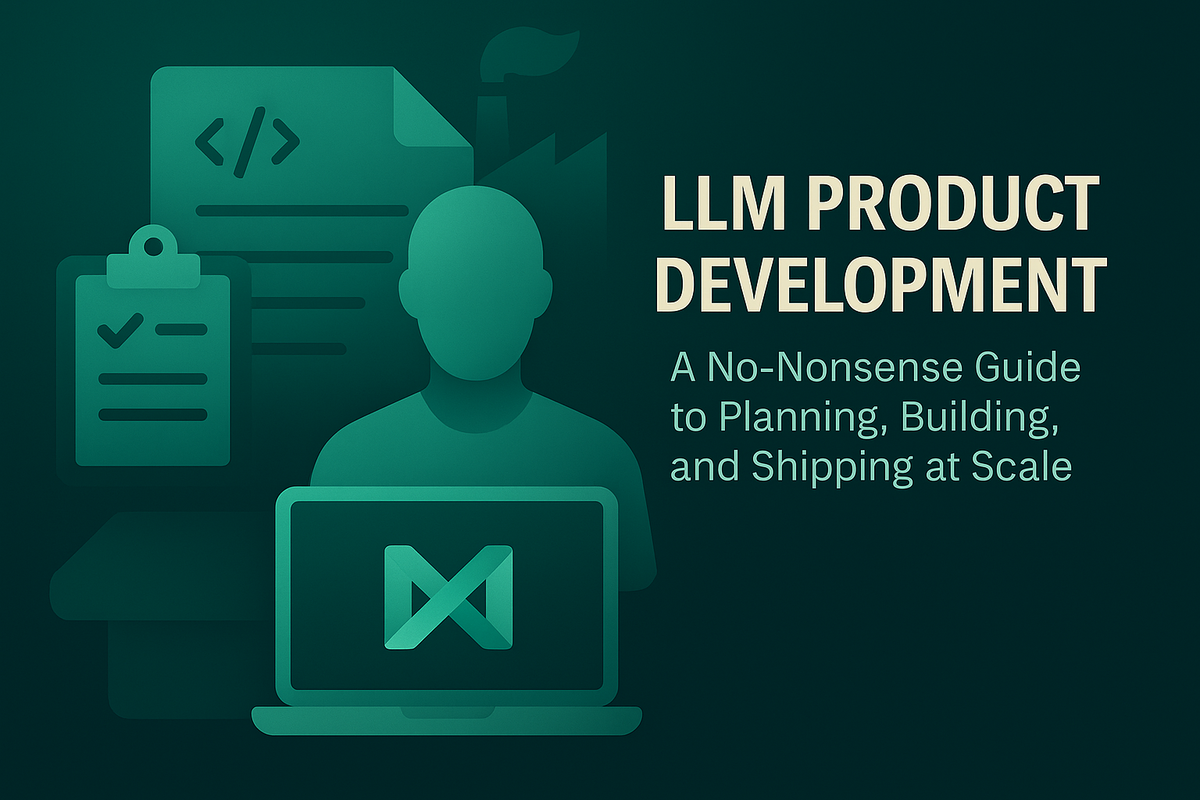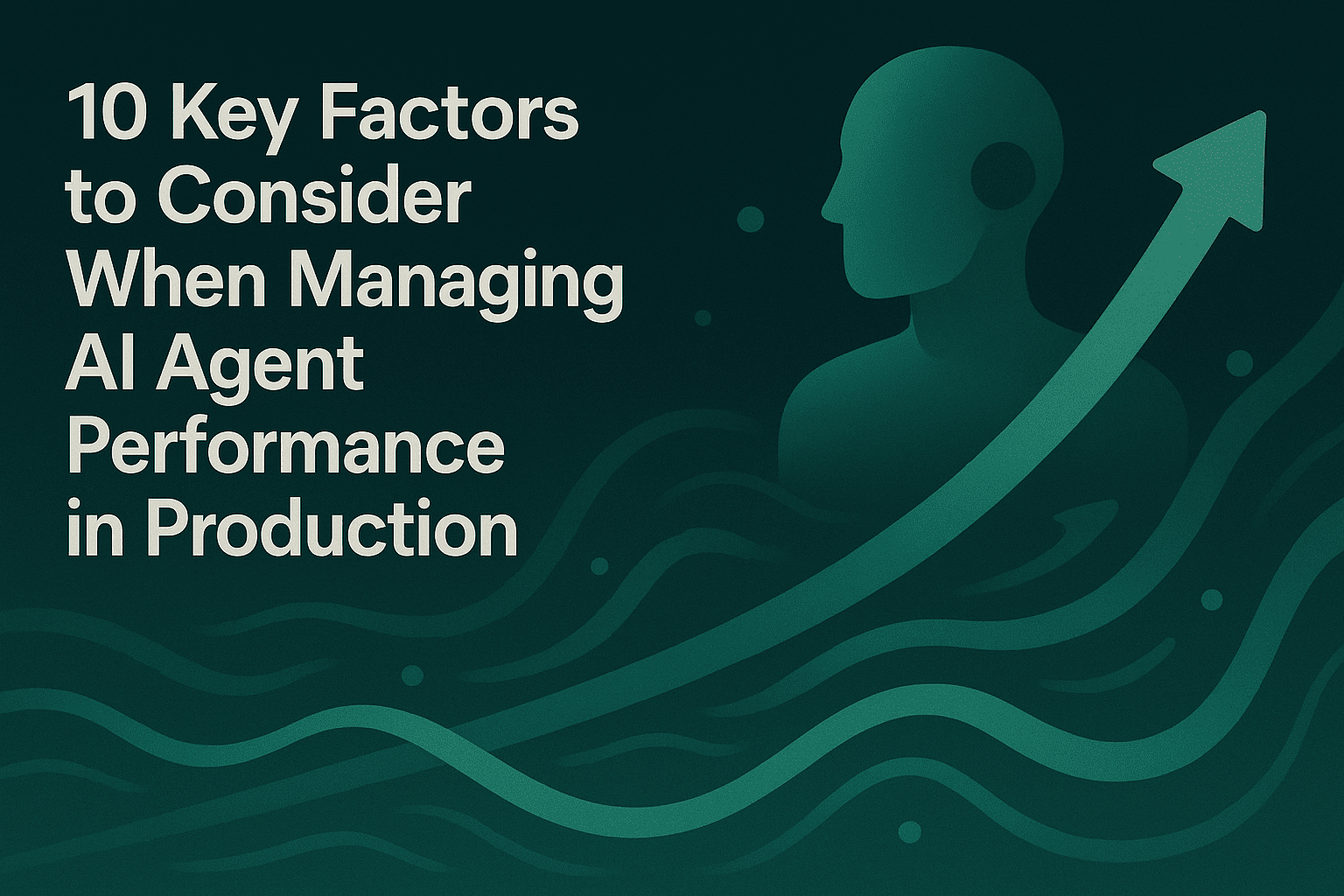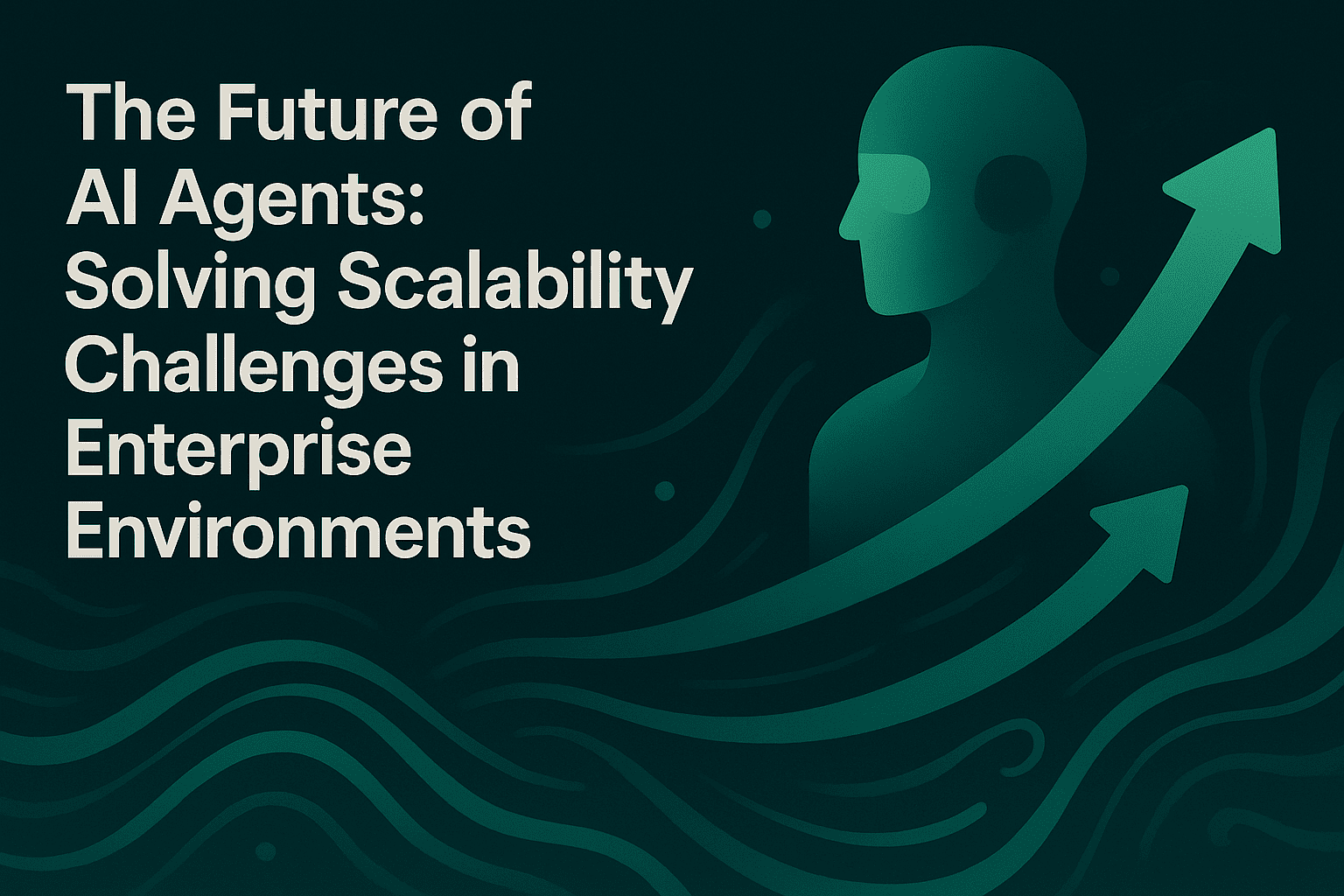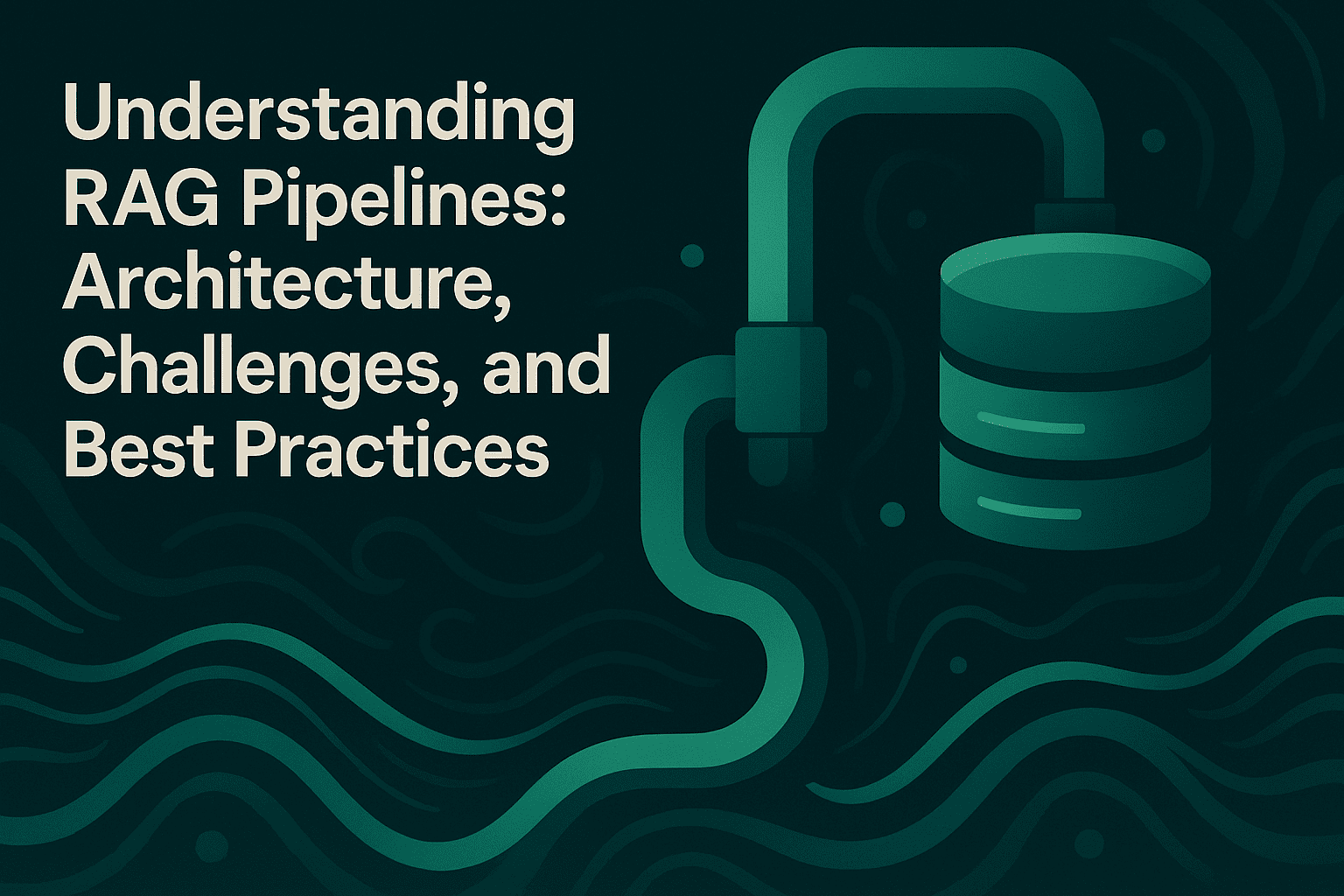LLM Product Development: A No-Nonsense Guide to Planning, Building, and Shipping at Scale

1. Why 2025 Is Different
1.1 Model Commoditization
ChatGPT wowed the world in 2022. By 2025 teams can deploy models such as GPT-4o, Claude, Llama-3, and Mistral models within minutes. Capability differences between major models have narrowed for many common tasks. Your edge now sits in:
- Latency and cost per call
- Domain accuracy and guardrails
- Continuous improvement loops
1.2 Regulatory Heat
The EU AI Act and India’s evolving digital governance frameworks increasingly emphasize transparency, documentation, and auditability. The US is aligning via the NIST AI Risk Framework. Compliance is no longer optional.
1.3 User Maturity
Users benchmark every bot against the best they have seen. Hallucinations get screen-shot and posted on X before your comms team wakes up. Reliability and explainability are table stakes.
Takeaway: You need an engineering discipline, not a hack-a-thon.
2. Phase 1: Nail the Problem, Not the Demo
2.1 Pick a Language-First Pain Point
If the task is primarily structured data operations, traditional systems often remain more suitable than LLMs. Great fits include:
- Summarizing lengthy documents (legal, medical, policy)
- Multi-turn customer support
- Generating personalized marketing copy at scale
- Complex data extraction from unstructured text
2.2 Quantify the Expected Win
Write a single sentence KPI before you write a single line of code:
- “Cut ticket handle time by 30 percent in Q3”
- “Generate 1000 product descriptions per hour with less than 2 percent factual errors”
2.3 Secure the Corpus
- Collect internal docs, chat transcripts, and knowledge bases
- Remove or mask PII using automated scrubbers
- Classify documents by sensitivity level
For a hands-on checklist, see Prompt Management in 2025.
2.4 Align Stakeholders Early
Bring legal, security, and domain experts into the first sprint. Retro-fitting guardrails in week ten is pure budget burn.
3. Phase 2: Model Selection Without the Hype
| Criterion | What to Check | Useful Links |
|---|---|---|
| Size vs Latency | Larger models often introduce higher latency, depending on provider and deployment setup | Hugging Face Open LLM Leaderboard |
| Domain Alignment | Does the base model know your jargon? If not, fine-tune or adopt adapters. | Agent Evaluation vs Model Evaluation |
| Hosting Flexibility | SaaS API, VPC deployment, or on-prem cluster. Compliance may decide for you. | Maxim In-VPC |
| License Terms | Check usage caps, rate limits, and commercial clauses before you build. | OpenAI policy |
Rule of thumb: Begin with the smallest model that meets your latency and quality requirements.
4. Phase 3: Prompting, Fine-Tuning, and Tooling
4.1 Version Prompts Like Code
- Store prompts in Maxim’s Prompt Library or Experiments workspace.
- View structured version history and metadata for every prompt
- Recover session history when a junior dev overrides your gold standard.
4.2 Structured Prompt Templates
A reliable template often has:
- System block – sets persona and top-level rules
- Context block – passes retrieval snippets
- Instruction block – clear, concise task directive
- Output schema – enforce JSON or Markdown for downstream parsing
Template detail lives in the Maxim Prompt IDE.
4.3 Fine-Tuning When Prompts Top Out
- Collect 500-2000 high-quality input-output pairs.
- Apply LoRA adapters for quick training without full retrain.
- Track datasets and checkpoints in Maxim for reproducibility.
4.4 Multi-Step Agents
When tasks demand reasoning plus API calls, build agents:
- Configure multi-step agents using Maxim’s simulation and evaluation tooling, with trace-level insight into each step
- Insert code blocks, conditional branches, and external APIs
- Review span-level traces for each LLM invocation and tool call
Dive deeper in Agent Tracing for Debugging.
5. Phase 4: Evaluation That Scales (Maxim in Action)
5.1 The Evaluation Pyramid
- Unit tests – deterministic checks for formatting, schema compliance
- Automatic metric evals – Automatic metrics include semantic similarity, factual consistency, toxicity, and safety classifiers.
- Scenario simulations – Scale to thousands of runs with one click.
- Human review – specialist raters for high-risk content
What Are AI Evals? explains each layer.
5.2 Running Large-Scale Simulations
- Use Maxim’s Simulation module to fire multi-turn chats across diverse personas.
- Auto-generate edge cases: adversarial prompts, slang, or code snippets.
- Scale to thousands of runs with one click.
5.3 Auto-Evals Out of the Box
Metrics library includes:
- Context relevance – cosine similarity between answer and source docs
- Factual consistency – checks response alignment with source material or reference answers
- Toxicity – classifier-based evaluation using built-in safety checks
- Latency – P50, P90, P99
All pre-wired into Maxim dashboards. For metric recipes, see AI Agent Evaluation Metrics.
5.4 Custom Evaluators
- Plug in regex checks for policy compliance
- Inject domain validators such as ICD-10 codes or legal citations
- Combine with human-in-the-loop for borderline cases
5.5 Real-World Proof
Case study: Mindtickle cut hallucinations by a substantial percentage and improved customer satisfaction after moving to Maxim auto-eval pipelines.
5.6 CI/CD Integration
- Wire Maxim SDK into GitHub Actions or GitLab CI
- Block merges when eval score < target threshold
- Generate shareable HTML reports for stakeholders
Evaluation stops being a Friday once-over and becomes a gate in every release.
6. Phase 5: Deployment for Real-World Traffic
6.1 Pick Your Pattern
- SDK embedding – mobile, edge devices, or desktop tools
- REST endpoints – easiest path on AWS Bedrock or Azure OpenAI
- On-prem cluster – when data cannot leave the building
6.2 Optimize Performance
- Use caching mechanisms – such as Bifrost’s semantic caching, to reduce repeated inferences
- Token budgeting – truncate context sensibly, no 6k-token system prompts
- Parallel calls – batch low-latency prompts
LLM Observability details best practices.
6.3 Bifrost LLM Gateway
- Adds only 11 microseconds at 5000 RPS
- Handles provider failover and rate limit backoff
- Emits per-request telemetry for latency, tokens, and provider performance
More on Bifrost at the bottom of the Agent Simulation and Evaluation page.
6.4 Structured Outputs and Contracts
Define JSON schemas in prompts and validate them post-call. Broken schema? Reject the response, retry with stricter temperature or fallback model. This keeps downstream services stable.
6.5 Security First
- SOC 2 Type II compliance and enterprise SSO/RBAC support.
- Role-based access with custom SSO
- In-VPC deployment satisfies healthcare and finance auditors
7. Phase 6: Observability, Feedback Loops, and ROI
7.1 Full-Stack Tracing
Maxim captures prompts, model parameters, spans, token usage, cost metrics, and latency distributions
Set alerts when P90 latency > 700 ms or hallucination score > 0.3.
7.2 Drift Detection
Comparing eval scores week over week catches silent regressions. Teams can route failing examples into datasets for re-testing or refinement.
7.3 Closing the Loop
- Auto-generate new test suites from prod outliers
- Feed resolved human tickets into fine-tuning corpora
- Version prompts in lock-step with model upgrades
7.4 Tie Metrics to Dollars
Export Maxim dashboards to Snowflake, join with finance tables, Quantify operational impact by joining Maxim metrics with business analytics systems.
For a deeper dive into ROI math, read AI Reliability: How to Build Trustworthy AI Systems.
8. Looking Ahead
The next wave is multi-modal and multi-agent. As multi-agent pipelines mature, orchestration patterns increasingly resemble structured task delegation. The foundation remains the same: clear KPIs, disciplined evaluation, tight feedback loops, and ruthless cost control. Teams that automate simulation and observability today will adapt fastest tomorrow.
If you are ready to move past playgrounds and into production, book a live session with Maxim’s solution engineers: Schedule a demo. See how simulation, evaluation, and observability snap together in one workflow that ships reliable AI five times faster.
9. Resources and Further Reading
- Maxim Core Blogs
- Competitor Comparisons
- Case Studies for Inspiration
Ship smart, evaluate hard, and keep proving value. The playground era is over. Welcome to industrial-grade LLM product development.


